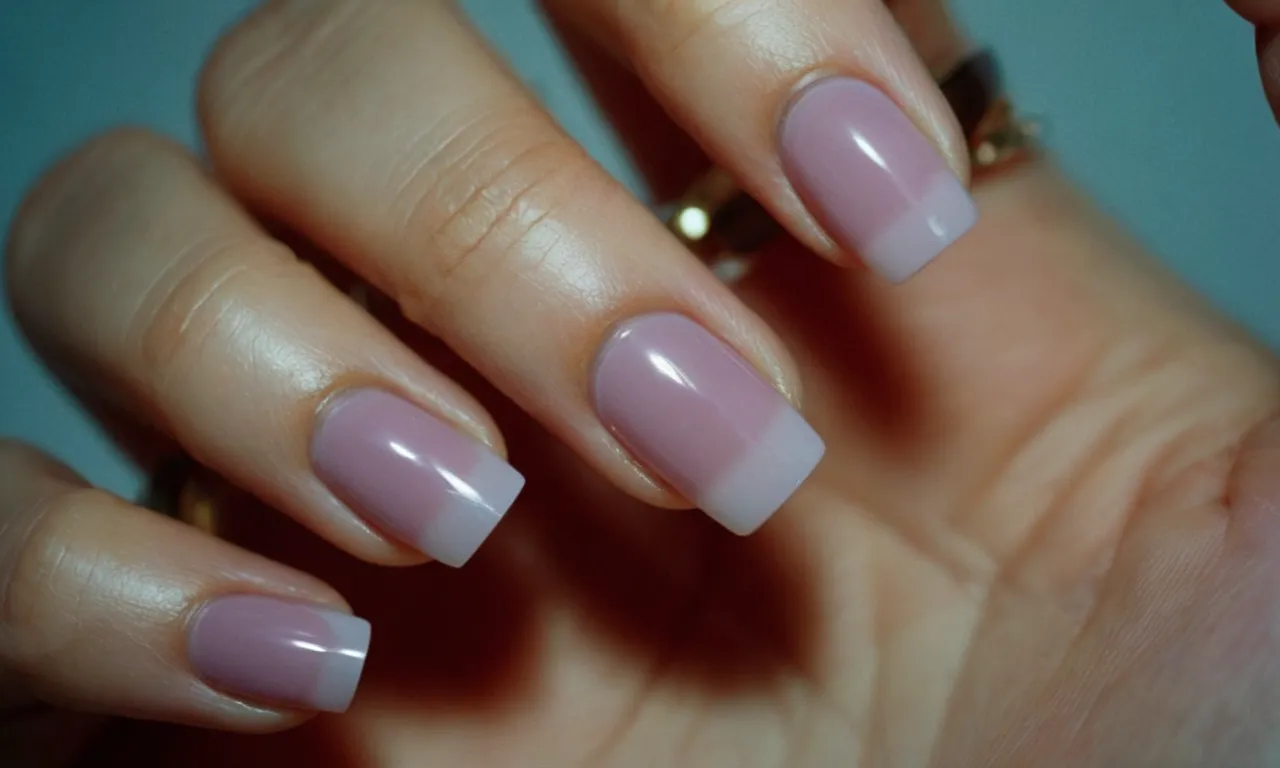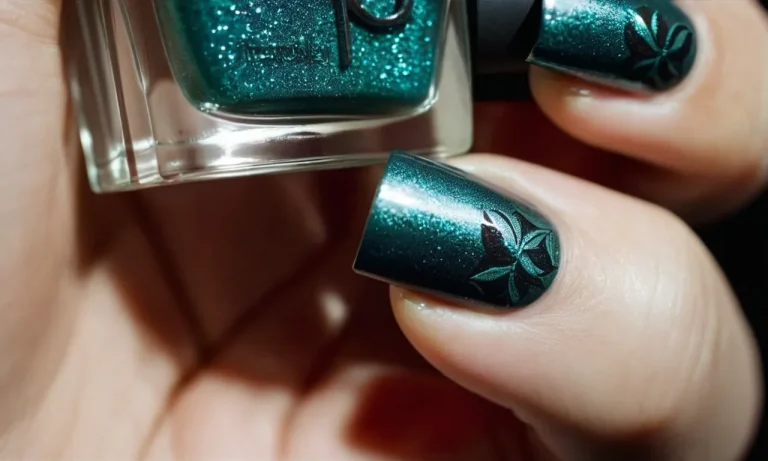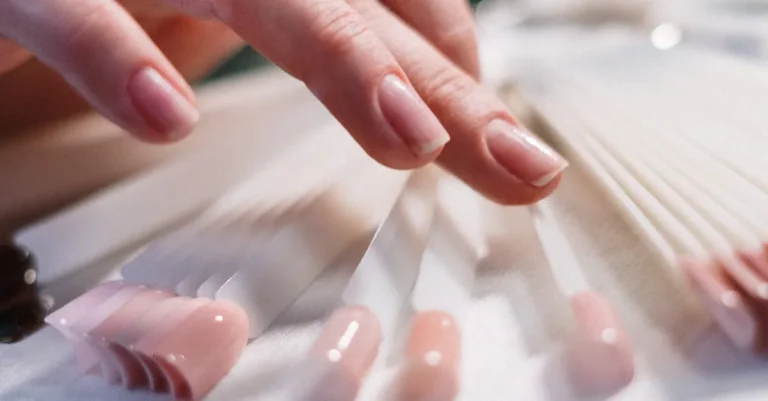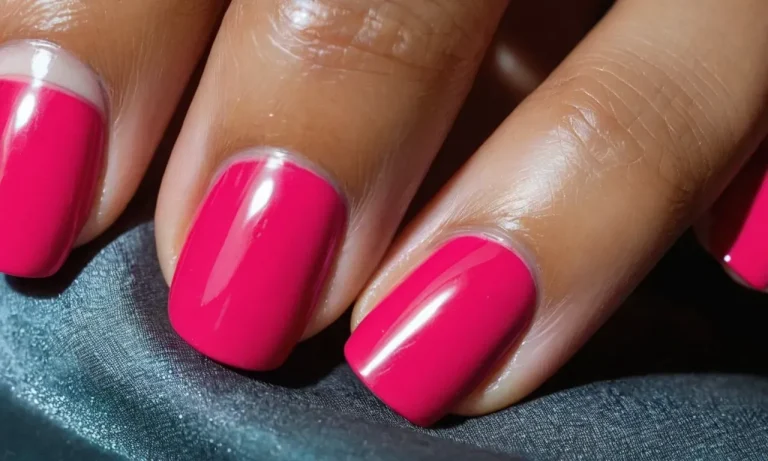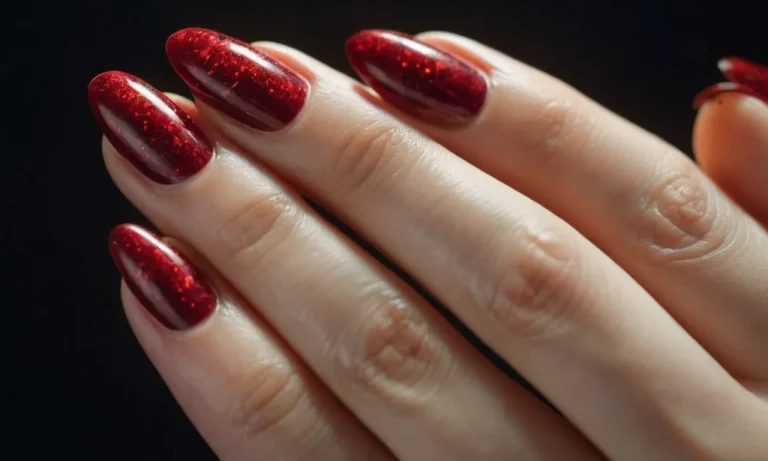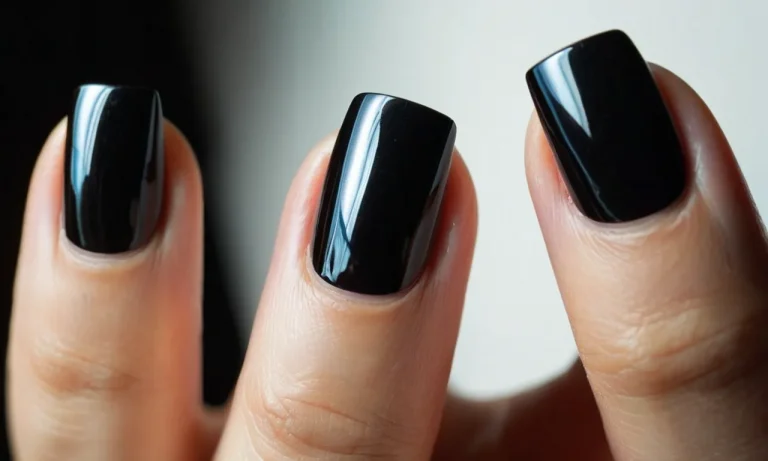What Causes Dents In Nails After Removing Acrylics And How To Fix Them
If you recently removed your acrylic or gel nail enhancements and noticed indentations, grooves, or dents in your natural nails, you’re not alone. Many people find that taking off acrylics leaves their nails a bit worse for wear.
The good news is that with proper care and treatment, these dents usually grow out within a few months as your nails regenerate. There are also things you can do to help speed the process along.
What Causes Dents and Damage to Nails After Acrylics
Improper Acrylic Removal Techniques
Using improper tools and techniques to remove acrylic nails can lead to dents, thinning, cracking, and other damage to the natural nails underneath. Filing or picking aggressively at acrylics can thin out the nail plates and cause indentations.
Similarly, using metal tools or abrasive buffers can gouge into the nail surface, leaving lasting marks. According to nail care experts, the safest acrylic removal methods involve chemical solvents or thermal nail caps to gently break down the product instead of ripping it off manually.
Thinning of the Nail Plates
Even with proper removal methods, having acrylic or other salon enhancements for prolonged periods can weaken nails over time. The additional weight and pressure of long acrylic nails may flatten the curvature of natural nails, causing a dipped appearance once removed.
This effect is sometimes called “thinning”. As nails naturally thin with age, artificial products can accelerate the process. However, giving nails a rest between applications allows them to rebuild strength and thickness.
Using nail treatments with strengthening properties can also help reverse thinning effects.
Trauma and Pressure on Nails
Acrylic and gel nail enhancements look pretty, but they significantly alter the way our natural nails function. The inflexible artificial material prevents nails from bending and absorbing shock as usual. This leads to an increased risk of cracks, fractures, and dents from acute trauma.
Even small impacts or snags that would normally only cause superficial damage can sink deeper impressions once the acrylic coating is gone. Everyday factors like typing, gripping items, and bumping into objects also add up over time.
Therefore, long term nail enhancement wearers may notice more pronounced divots and dents compared to those with short natural nails. However, avoiding further trauma while allowing nails to grow out can diminish the appearance of these marks.
Treatments and Home Remedies for Post-Acrylic Nail Dents
Massaging Nail Oil Into Nails
Massaging nail oil into nails is an easy and soothing home treatment for dents and ridges after removing acrylics. The massage helps increase blood circulation to stimulate new, healthy nail growth. Using a nail oil containing moisturizing ingredients like jojoba, vitamin E, and essential oils also softens and hydrates the nail bed to make dents less noticeable while you wait for new nail growth (source).
Gently massaging for just 5-10 minutes daily using your finger pads, not nail tips, can help fix dents and ridges over time.
Applying a Strengthening Base Coat
Using a strengthening base coat helps protect natural nails and improve their texture. Base coats containing nylon fibers, calcium, vitamins, and herbs like horsetail, lavender, and green tea extract help reinforce thin, weakened nails after acrylic removal.
This helps provide structure and resilience so nails can better withstand cleaning, typing, gripping, and other daily wear and tear that causes dents (source). Applying a good base coat under polish when redoing your manicure helps prevent future dents.
Trying a Biotin Supplement
Biotin is an essential B-vitamin that helps stimulate keratin production for faster, healthier new nail growth. Multiple clinical studies show biotin supplementation yields significant nail growth and thickness improvements in as little as 5 months (source).
Taking 2.5mg – 10mg of biotin daily can help fix dents by growing in thicker, stronger new nails. Ensure proper hydration and wait several months for visible improvements. Those with diabetes or taking certain medications should discuss biotin with a doctor first.
Buffing Ridges Down
Gently buffing down raised ridges with a fine grit nail file or buffer can help smooth dents, improving nail appearance temporarily while you wait for ridges to grow out. Take care not to over-file, as this further thins the nail plate.
Use light pressure and buff gently in one direction, not back and forth. Apply a nourishing cuticle oil after buffing to condition the nails (source). Regularly massaging in vitamin-rich oil post-buffing helps rehydrate the nail and speeds dent repair through new nail growth.
Preventing Future Acrylic Damage to Nails
Choosing a Qualified Nail Tech
Selecting a skilled and experienced nail technician is crucial for preventing damage when getting acrylics. Here are some tips for finding the right nail pro:
- Look for salons and techs licensed by your state board of cosmetology – this ensures proper training and hygiene standards.
- Read online reviews to gauge technicians’ skill level and customer service.
- Ask to see a portfolio of their work to assess their acrylic application technique.
- Choose a tech who takes time to examine and prepare the natural nail first.
- Avoid techs who push back or overfile the cuticles, which can lead to infection.
An unqualified nail tech can cause cracks, thinning, and peeling by using too much force during application and removal. But a pro will take care to preserve the health of your natural nails.
Taking Regular Breaks From Enhancements
Giving your natural nails a rest between acrylic sets allows them time to recover and rebuild strength. Here’s why nail vacations are so important:
- Acrylics seal out moisture and air from the natural nails, causing dryness and brittleness over time.
- The adhesives and chemicals used can gradually thin and weaken the nails.
- Removal techniques like drilling put stress on the nail plate.
- Frequent reapplication doesn’t allow nails to fully hydrate and regenerate.
Experts recommend taking a 2-4 week break between sets. Let your nails breathe, and nourish them with moisturizing creams. Your tech can also advise on ideal intervals between appointments.
Using a Nail and Cuticle Oil
Regularly massaging nails and cuticles with oil is an easy way to maintain strong, flexible nails that better resist damage from enhancements:
- Oils contain fatty acids that improve nail flexibility and prevent cracking and peeling.
- Jojoba, vitamin E, and coconut oils absorb easily to hydrate nails.
- Massage stimulates blood circulation for healthier nail growth.
- Gently push back cuticles during massage to prevent painful tearing during acrylic removal.
- Apply daily, focusing on bare nails between acrylic sets.
Quality nail techs may apply oil after removing acrylics. But maintaining the habit yourself helps optimize nail health between appointments.
Conclusion
While dents and divots after removing acrylics or other nail enhancements can be annoying and concerning, have patience. With diligent moisturizing and care, the dents tend to grow out within a few months.
You can also help prevent further damage by seeing an experienced nail tech for proper removal, taking breaks between sets, using cuticle oil, and more. With time and TLC, your nails will be back to their old selves.

